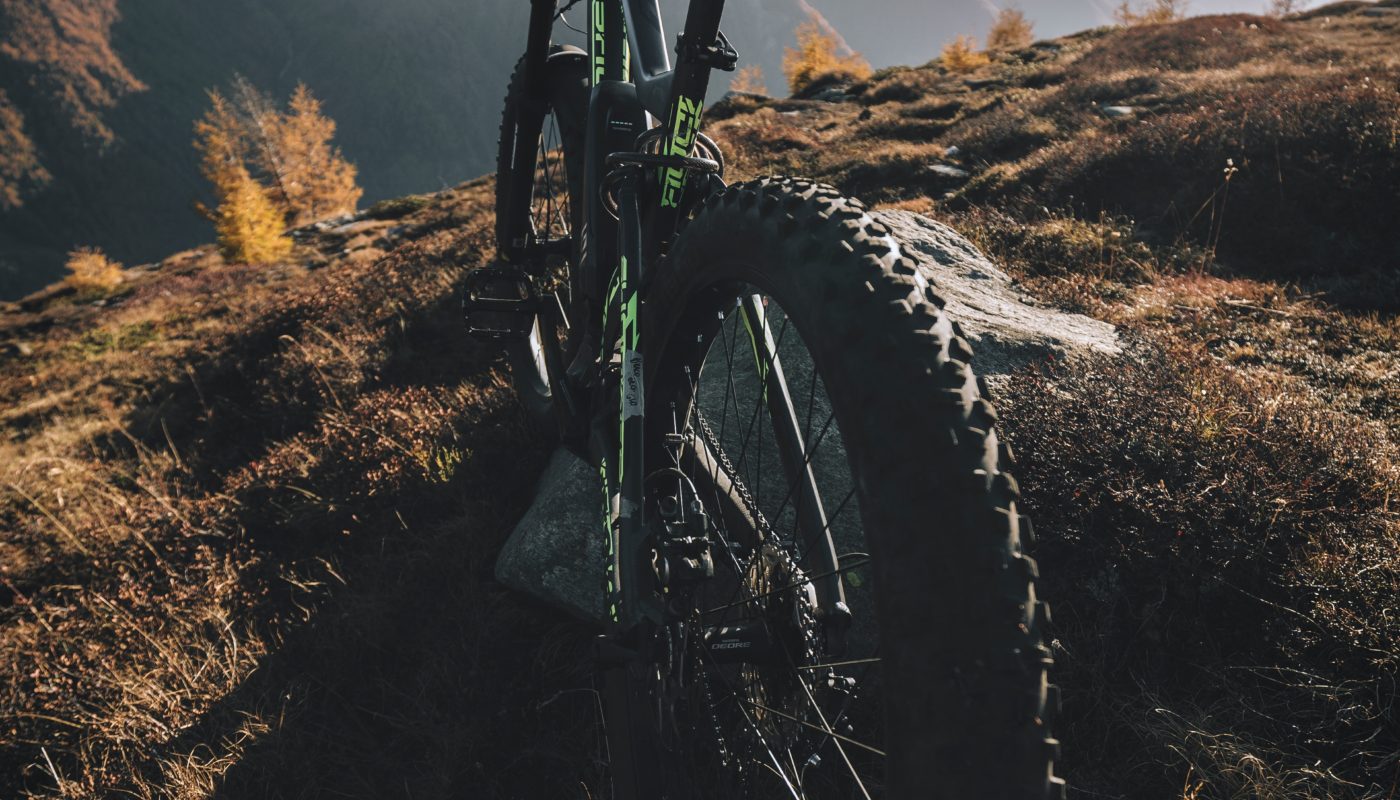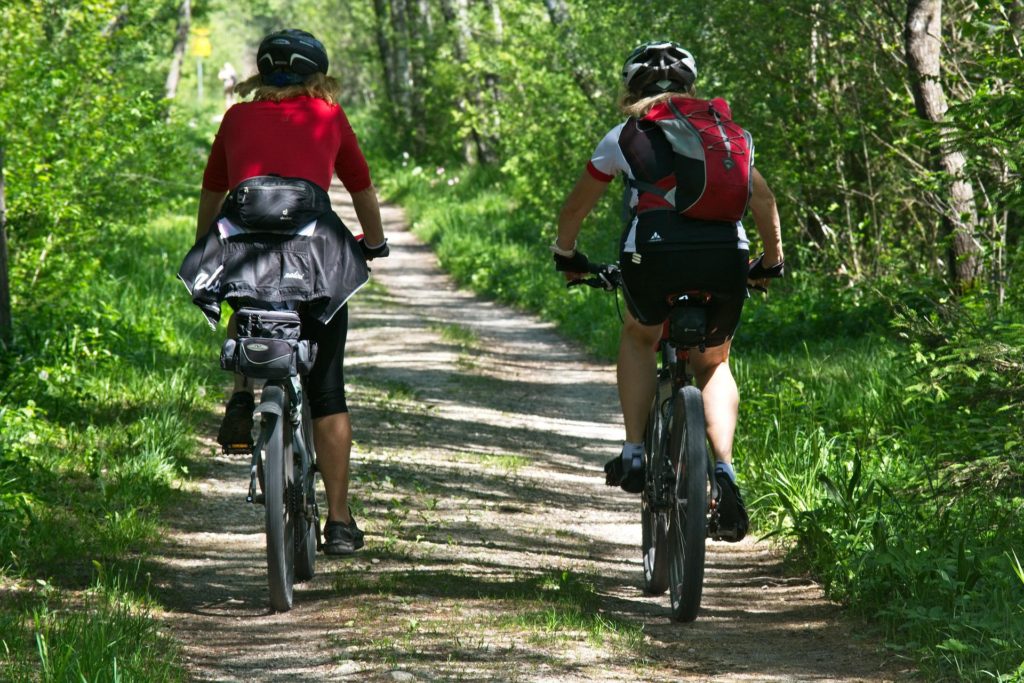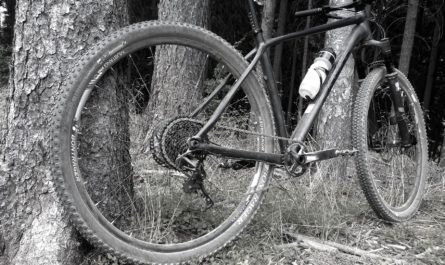How to get into mountain biking can seem a daunting task at first. There are so many bicycles to choose from and it can be confusing where to start as a total beginner.
Here we break down in a simple to digest form everything you need to know to get started in mountain biking.
Choosing a beginner bike
What type of riding will you be doing?
Riding for slow leisure or to explore makes less demands of the bike. The fork, wheels and frame will take less of a beating. As such lower specification of these parts make sense to get more for your money.
For faster paced riding downhill, or if planning to do jumps with your bike you’ll need a good fork with longer travel. A good fork will make the landings safer and improve comfort by big margins over cheaper forks.
For exploring and slow leisure rides, a basic 75mm-100mm travel fork bike is adequate.
For fast paced downhill rides consider a bike with 100-120mm fork, preferably with an air fork over a coil fork.

Should I Buy a Full Suspension Bike
If you are an older rider or suffer from back pains considered buying a full suspension bike.
Full suspension bikes will take the brunt of the force from imperfections and bumps on the trails. This will prevent the forces being transferred to your back as well as wrist and knee joints.
What trails your riding?
First consider the type of trails you are likely to ride. The bike you choose should be able to handle the majority of these.
For man made trails that are mostly evenly paved, a slimmer tire such as 2.2″ would be better choice.
For natural trails that may be covered with roots and mud, consider bikes that use wider tires with tires with deeper knobs.
This will improve your level of comfort on the trail. A wider tire can range from 2.3″ to 3.0″.
These will provide you with better grip on trails where grip may be difficult for shallower tires to find in loose dirt.
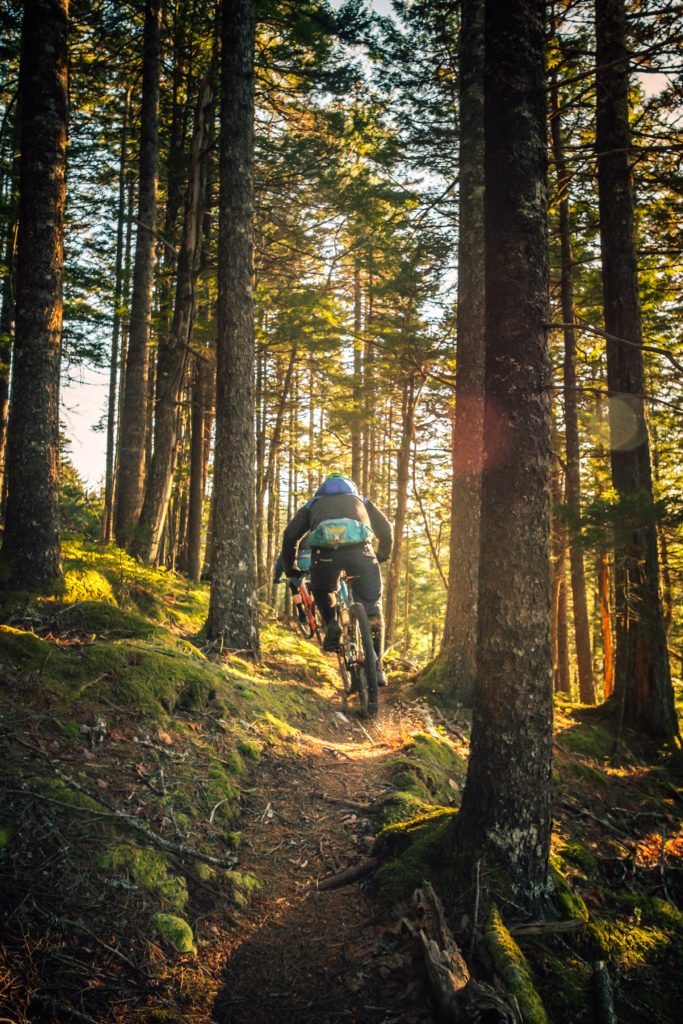
Budget
While you may be tempted to spend your entire budget on the bike consider the total cost first. You’ll need to spend extra on all the accessories and maintenance gear required.
The most basic gear you’ll need are:
- Pair of good mountain bike gloves
- Mountain bike flat pedals
- Water bottle cage & cycling water bottle
Other pieces of gear to consider are:
- Mountain biking shoes
- Cycling glasses
Maintenance gear you’ll need:
- Spare tire
- Spare inner tubes
- Foot pump and hand pump
- Fork pump (if using an air fork)
- A set of hex keys
The cost of new mountain bikes can come as a shock to many. However a mountain bike is not a toy.
It is a mode of transport that is expected to perform as intended for years or even decades. As such it has to be manufactured to a high standard.
The reasons is so it handle all the forces that will be put through it throughout its years without falling apart.
You can buy a cheaper department store bike but you’ll end up paying for it many times over. Due mostly to its reduced expected life and higher probability of part failures.

Safety Gear
Staying safe while out on the trails is the most important part of riding. Before going on trails at speed first check out the trails at low speeds or even get off the bike and walk sections of it first.
Most importantly, invest immediately in safety gear to protect yourself in case of an accident.
This should consist of the basics:
- Cycling helmet
- Elbow Pads
- Knee pads
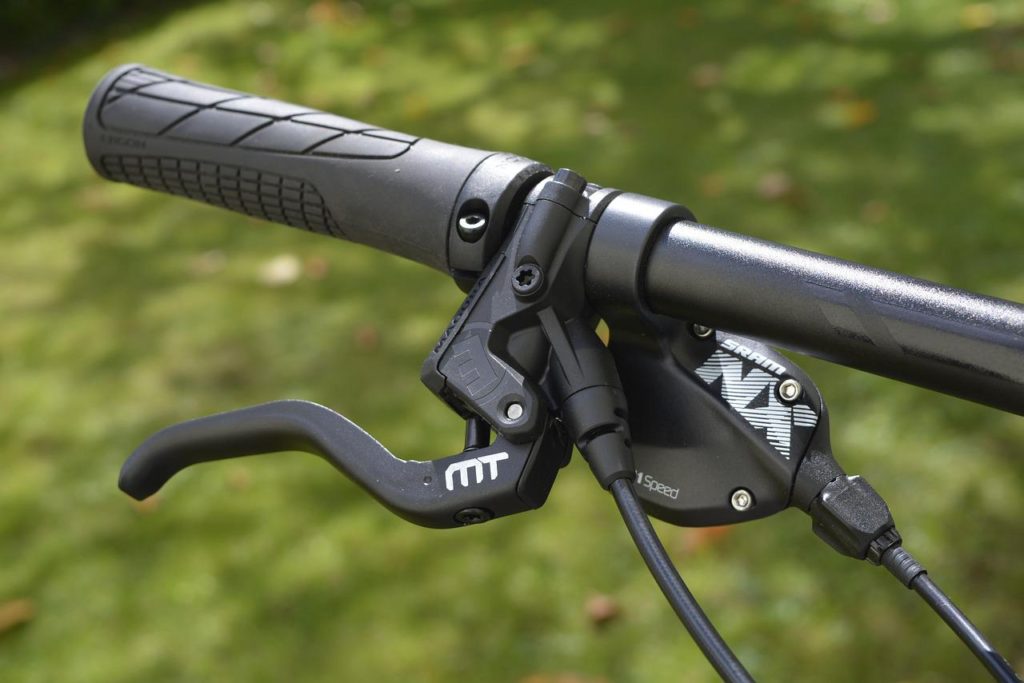
Prepare for Worst Case Scenario – Don’t Get Stranded
We don’t want to think that we’ll get a puncture or get lost on the trails when we set off. Unfortunately it does happen to everyone eventually. Therefore It is wise to always leave prepared.
Use your smart phone to download trails maps such as from the trail forks app to help you find your way around the trails.
Local authorities in charge of the land where the trail resides have useful information on their websites. They sometimes have local maps and emergency contact numbers if you run into trouble.
It is recommended you learn how to change an inner tire tube before going out on your own.
A flat tire It is the most common failure of a mountain bike which is thankfully easy to fix once you know how.
Before going out learn how to change your inner tube so you won’t have to learn while miles away from home on the trail.
The most basic equipment you should always carry while mountain biking include:
- Spare inner tubes.
- Small hand pump.
- Tire levers to assist tube change
- Full water bottle to ensure good hydration at all times and at least one carb heavy snack.
Start Slow – Improvements Come Over Time
Sessions Tough Sections
If your goal is to improve your mountain biking skills then we suggest doing sessions of sections until you can ride them smoothly.
Learning to ride out of saddle is very important skill for mountain biking, especially on hardtail bikes.
Moving out of saddle allows your legs to bend to absorb bumps on the trails. This allows you to ride them more smoothly.
In addition it allows you to put more power through the pedals, important for when you need to clear obstacles on climbs.
Build up Fitness and Strength Naturally Overtime
As with any sport the more consistently you do it the body will start to adapt to the new demands being made of it.
The strength and fitness for mountain biking will build up naturally over several months.
Enjoy your riding and don’t put too much focus on constantly improving.
Before you know it you’ll be able to go much further before tiring out especially on long climbs to the top of trails.
Work Out Your Optimal Setup
Everyone’s setup on a mountain bike will be unique. Our body proportions differ even more than our bikes.
After a while you should get a feel of what saddle height is optimal for you. The tire pressures that are best for the trails you are riding. The air fork pressure that is most suitable for you at your current weight.
Experiment with your bike
Finding the optimal setup takes some experimenting. We recommend you estimate your initial setup following basic fitting advice then ride for several days with it. After this period, change one variable at a time and get a feel if it’s better or worse.
After sometime you will fine tune your setup to be optimal for your type of riding. Nobody can tell you what your ‘perfect setup’ is. You’ll for the most part have to go based on feel.
You can opt to get a bike fit from a professional, that can give you a great starting point if you are really unsure.
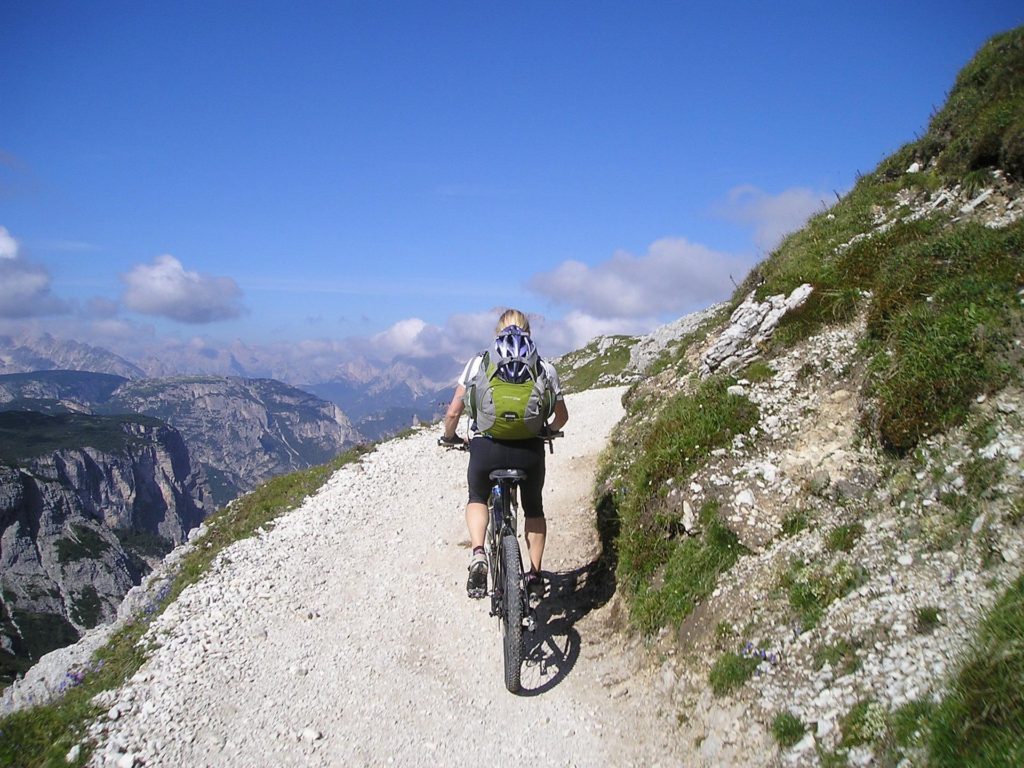
Maintenance
Your scheduled maintenance should include all drivetrain parts, chain, cassette and chainring.
Check for chain wear regularly as running a stretched chain can be very costly and result in needing to change the entirety of the drivetrain.
You can do this using a chain checker tool.
Service your fork to ensure its long life and continued smooth operation.
Ensure your tires are not too worn out or cut up. Swap for a new set when necessary.
Cleaning an important part of maintaining your bike
Clean your fork stanchions of dirt regularly after rides and considered using a mudguard to protect it further.
Clean your bike regularly, especially after particularly wet or muddy rides.
Ensure that your brake pads don’t become contaminated with dirt or too worn down.
If worn down or contaminated a shop can install a new pair for a small fee.
You can also learn to this for yourself as well as other minor basic maintenance tasks that are not too involved or require any specialist tools.

